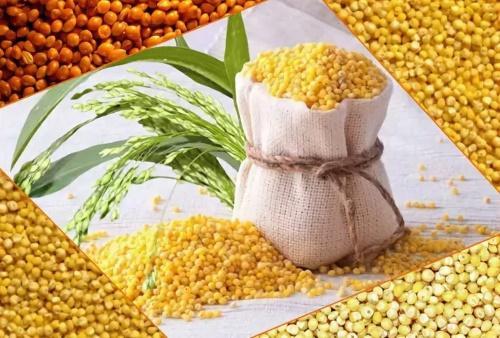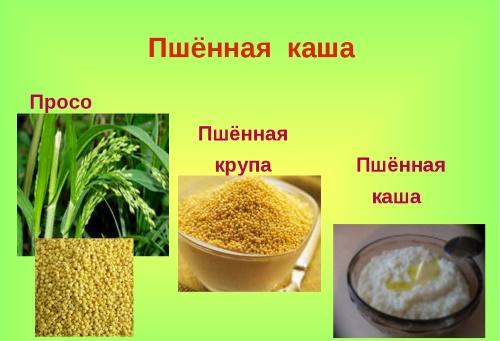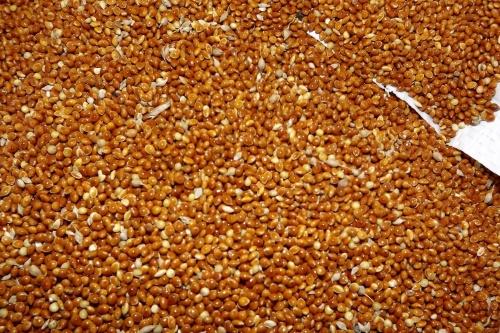What cereal is millet made from - we will find out the details and secrets of millet
 We all know the taste of millet, fragrant, boiled and very tasty. Such a dish is included in the menu in kindergarten and school canteens, and even in hospitals, yellow porridge is very popular. Do you know what cereal is used to make millet? Indeed, unlike wheat and buckwheat, this cereal and the cereal from which it is obtained have different names.
We all know the taste of millet, fragrant, boiled and very tasty. Such a dish is included in the menu in kindergarten and school canteens, and even in hospitals, yellow porridge is very popular. Do you know what cereal is used to make millet? Indeed, unlike wheat and buckwheat, this cereal and the cereal from which it is obtained have different names.
What cereal is millet made from

Why millet turned into millet, but porridge did not become "millet"? Everything is very simple: the name is taken from the Slovenian language, in which refined grain is called millet (pseno). Accordingly, in order to obtain cereals, millet grain must undergo special processing (cleaning).
How millet is made
 The grains of millet are covered with husk, and underneath is also a film shell. In order for the cereals to boil well, it is necessary to free them from this. Grain processing consists of several stages:
The grains of millet are covered with husk, and underneath is also a film shell. In order for the cereals to boil well, it is necessary to free them from this. Grain processing consists of several stages:
- sorting millet by size, selecting the largest grains, and sifting out garbage (sand, grass seeds);
- using special machines to clean the husk;
- grinded in grinding equipment to release the film.
Premium groats undergo one more processing. Millet is washed with hot steam to get rid of the bitterness. It is given by technical oils in contact with equipment. Flakes are also made from millet, by first boiling the processed cereal and drying it.
Types of millet
 The more stages of processing millet grains have gone through, the better and more expensive the cereal is. There are 4 types of millet in total:
The more stages of processing millet grains have gone through, the better and more expensive the cereal is. There are 4 types of millet in total:
- Shingle - bright yellow, shiny grains, peeled from the flower shell. The most useful cereal, but not very tasty, with a bitter taste.
- Polished millet - light yellow, matte groats, completely passed all stages of processing. Preparing quickly.
- Crushed millet - grains crushed during processing (a by-product). From it you can quickly cook liquid porridge... Flour is also made from such "waste".
- Flakes - peeled, crushed and pre-cooked and dried small fragments. Used for cooking porridge - five minutes.